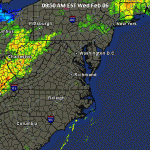Here are our freshly revised shelter in place procedures:
In certain emergency/disaster situations, such as a chemical spill or contamination by a biological agent, or earthquake, evacuation will NOT be the appropriate immediate response. Evacuating the building during such an emergency will actually place people in greater danger than if they were to stay inside and wait.
- The shelter-in-place location for a chemical spill or biological agent contamination should be as high up in the building as possible, and in a room without windows, if possible (our Staff Lounge on the second floor).
- In the event of an earthquake, the immediate shelter-in-place location is underneath the nearest desk or study table.
- If library staff and patrons need to be protected from someone who has been identified as being armed and dangerous, we will initiate Shelter-in-Place procedures using several locations within the library.
Chemical/Biological
In the event that we are notified of a chemical spill or biological event contamination, the ERC will request, via the PA system, that the LOC meet at the Circulation Desk. If the LOC determines that a shelter-in-place response is necessary, initiate procedures as follows:
· Make the following announcement over the PA for our area, instructing staff and patrons that we are initiating shelter-in-place procedures:
“We have received notice that there has been a chemical spill [or toxic material contamination] in the vicinity of the Library. All Library staff are directed to initiate “shelter in place” procedures. All patrons inside the Library should report to the Circulation desk at this time for instructions.”
· Close the Library and post the “Shelter in Place” sign on the outside of the front doors. The sign explains why we are closed, where we are, and how to contact us. The sign is located in the front pocket of the Disaster Plan binder at the Circulation desk.
· Forward the Circulation desk phone to the Staff Lounge phone at 982-5980.
· Ask patrons to stay – not leave.
· Call Facilities Management (924-2667) or Systems Control (982-4685) to request that they turn off all fans, heating and air conditioning systems in our vicinity.
· Our second floor Staff Lounge (Room 2211A) is designated as our Shelter-in-Place location because it is above the ground floor, with the fewest windows or vents. Additional spaces may be designated in order to provide more space. The Staff Lounge does contain a hard-wired telephone and access to restrooms.
· Essential disaster supplies, such as nonperishable food, bottled water, battery-powered radios, first aid supplies, flashlights, batteries, duct tape, plastic sheeting, and plastic garbage bags are available in our Staff Lounge, stored in the black cabinet in the kitchen area, and beside it. (There is a copy of this procedure with the supplies in the cabinet.)
· Use duct tape and plastic sheeting (heavier than food wrap) to seal all cracks around the door(s) and any vents into the room. Use wet paper towels to seal the openings underneath the doors.
· Use the telephone to notify emergency services that we are in our shelter-in-place, including how many people as well as where we are.
· We are advised to keep listening to the radio or television until we are told all is safe or we are told to evacuate. Local officials may call for evacuation in specific areas at greatest risk.
Earthquake
In the event of an earthquake severe enough to cause damage to the building, the best response is to stay inside the building until the event is over (see following). Often, more people are hurt by falling debris outside of the buildings in these events than are harmed inside the buildings, if they have sought appropriate shelter inside.
- stay inside the building and immediately take shelter underneath a desk or table, wherever possible.
- be prepared for further earthquake activity and aftershocks
- stay away from windows, mirrors, overhead fixtures, filing cabinets, bookcases, and electrical equipment as much as possible
- once the shaking has stopped, see if anyone in your area is trapped or injured
- assist anyone who needs help, and assist in the evacuation of the building
(See the “Earthquake” section in the emergency/disaster events section for further details)
Armed and Dangerous
In the event that either a person in the library or in the vicinity is identified by library staff or other source as being armed and dangerous, library staff and patrons will shelter in-place. The ERC will direct everyone on the main level (2nd floor) to proceed to the Staff Lounge. The doorways from the halls adjacent to the Staff Lounge should be locked using the VE-2 key. They can then be opened without a key from the Lounge side, and will require the VE-2 key to unlock from the outside.
Staff and patrons on the first floor (LRC and Med Ed) should proceed to the Carter Classroom. The desk person should take the cordless phone with them into the classroom, for use in contacting staff in the Lounge (2-5980). The door should be locked, the blinds lowered, and the lights turned off.
Historical Collections staff and patrons (basement level) will shelter in the Rawles Room in this situation. A staff member should take their cordless phone into the Rawles Room for use in contacting staff in the Lounge (2-5980).
Depending on the situation, patrons in the Cabell Room may need to shelter in-place in the bathrooms. If possible, the ERC will send a Circulation staff member to Cabell in order to direct the shelter in-place. The designated person will take the cordless phone from Circulation for use in communicating from Cabell to staff in the Lounge (2-5980).







